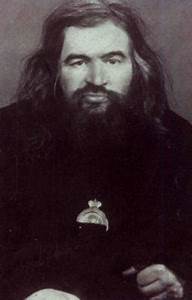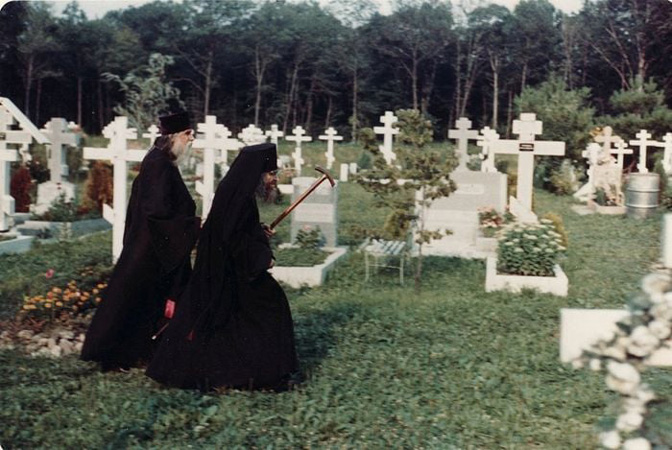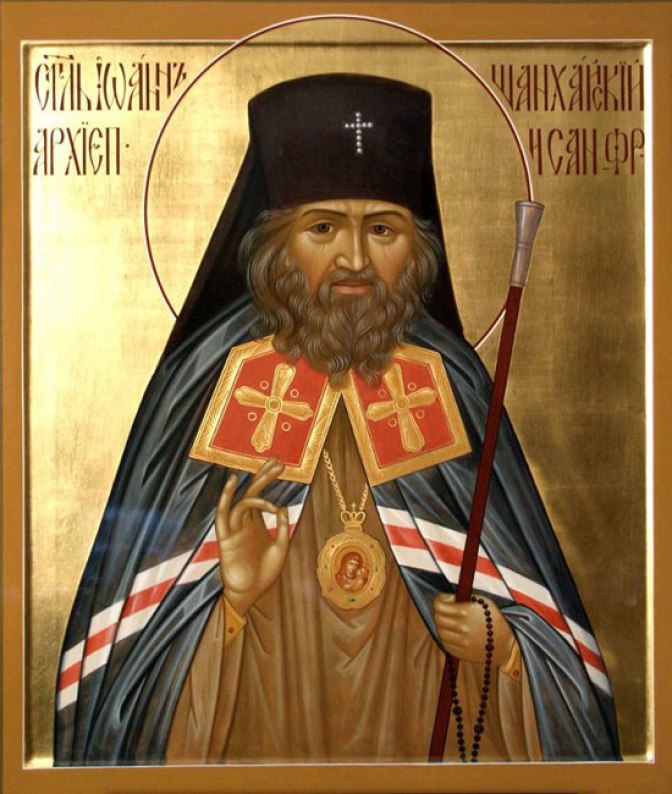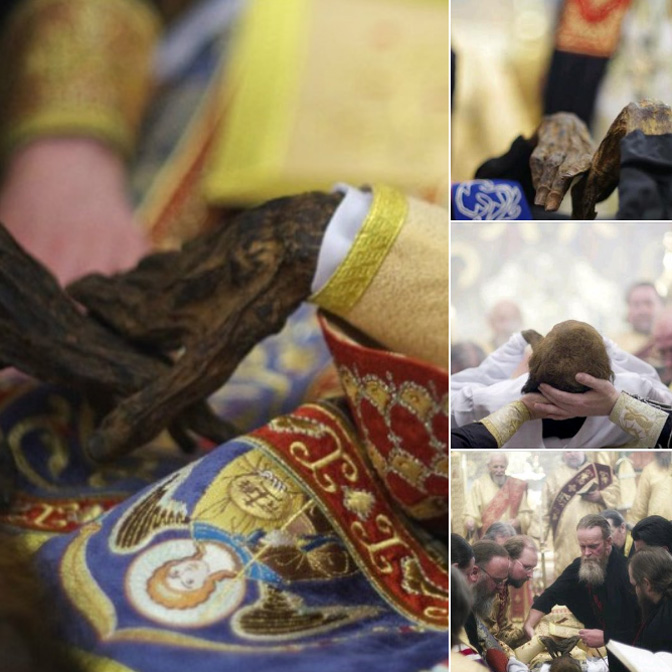He is one of the greatest Orthodox saints in the 20th century. Having escaped as a Russian nobleman before the revolutionary terror of 1917, he studied theology in the Serbian capital and supported himself by working as a colporteur. He was ordained a monk in 1926 in the Miljko Monastery, on the Morava river, and ordained a bishop in 1934 in Belgrade. “If you want to see a living saint, then go to Bitola, to Father Jovan,” said Nikolaj Velimirović, then Bishop of Ohrid.
November in Belgrade, evening, year 1921, the third evening after the Great War. It is cold, cold is coming from the Danube river and from the plains, it smells of snow. On the Terazije ridge, not far from the “Moscow” hotel, the colporteur presented the newly printed evening editions of the newspaper. He is thin, of short stature, with a honey-colored face, he exudes gentleness, he is smiling, he has a strong Russian accent. His name is Mikhail Borisovich Maksimovich, he is a student at the Faculty of Theology at the University of Belgrade and he is in the Serbian capital for the third year.
Hardly any of the passers-by who stop to buy a newspaper could even think that he is standing in front of a man who will become one of the greatest Orthodox saints in the 20th century.
Three years later, in the Russian Church on Tasmajdan, Belgrade the young colporteur will be made a reader, and in 1926, the Metropolitan of the Russian Orthodox Church Abroad, Antonija Hrapovicki, will tonsure him in the Miljko Monastery, on the Morava river, and ordain him to the rank of hierodeacon. Then he will get the monastic name John, after his holy ancestor from the XVIII century, great-uncle, Saint John (Maksimovich) Tobolski.

MIKHAIL
Mikhail was born on June 4, 1896, in the town of Adamovka, Kharkiv province, in a famous noble family. The name – which means Like God or the One who is like God – was given at the baptism in honor of the Archangel Michael, the architrave of God.
As the son of one of the leaders of the nobility in the Kharkiv province, he was prepared for a secular career. In the years of the outbreak of the First World War, he graduated from the Poltava Cadet Corps, and in 1918 from the Faculty of Law at the Imperial University in Kharkov.
Even then, he was almost completely dedicated to deep studies of theology and the deeds of the saints. The relics of Archbishop Melentije Leontievich the Wonderworker rested in the Kharkiv Assumption Cathedral. Influenced by this sacred example and the almost obvious spiritual forces that radiated from the relics of the Miracle Worker, over which he prayed daily, young Michael begins his astonishing spiritual asceticism, which few understand in this secularized era:
“For forty years he performed the same feat of night vigil, never lying in bed, spending nights in a motionless position, with his arms raised high; even if he falls asleep, it happens only when he is overcome by exhaustion from sleep, in the middle of the methane, in the corner, under the icons, kneeling. ”
The achievements of his piety soon became obvious from the outside, even at such a young age, so the competent archbishop Antonija Hrapovicki, one of the most prominent church figures of that time, became interested in him. He tried to bring the young man closer to himself and help in his spiritual growth.
Soon after, Metropolitan Antonie and young Mihail (with his family) arrived in Serbia, retreating before the terror of the communist revolution. They will be the first to find the Russian Orthodox Church Abroad in Sremski Karlovci, and the second will enroll in the Faculty of Theology in Belgrade.
JOURNEY
After graduating from the Faculty of Theology (1925) and becoming a monk (1926), Mihail, now Hierodeacon John, taught law at the Serbian State High School. Three years later, in 1929, he became a lecturer and educator at the Serbian seminary of the Ohrid Diocese in Bitola (called, unofficially, the Theological Seminary of St. John the Theologian). It is here where the miraculous way of his life-feat is discovered and realized.
“He constantly prayed and served the Holy Liturgy every day. He fasted strictly, ate only once a day- late at night. He was never angry,” Seraphim Rose and Herman Podmoshenski noted in the Lives of St. John of Shanghai and San Francisco.
“The students were the first to discover his great feat of asceticism: they noticed that he did not sleep, but that, when they all fell asleep, he went around the boarding school at night, shadowing them with the sign of the cross while they slept – immersing himself in Jesus’ prayer. In the end, to make sure that he wasn’t sleeping on the bed, the pranksters put bed bugs under the sheet…and nothing happened to him.
Many years later, he himself admitted that he had not slept on the bed since the day of his monastic vows.
Such a struggle with one’s own body is very rare and extremely painful… ”
There, on the shores of Lake Ohrid, a mystical connection was established between John and the Venerable Nahum of Ohrid, a disciple and accomplice of Saints Cyril and Methodius. The relics of the Venerable Nahum were located in the monastery dedicated to him on Lake Ohrid. He was considered a particularly quick healer of the mentally ill. With his icon in his hands, John went to hospitals and prayerfully healed the sick, which he would later do in China, over the sick Chinese.
He soon became famous for his dedicated actions and miracles. Serbian Bishop Saint Nikolai Velimirovich, who then ruled the Ohrid diocese, said at the time: “If you want to see a living saint, then go to Bitola, to Father John.”
In May 1934, it was decided that Jovan would be elevated to the rank of bishop, and he, still not knowing what it was about, was invited to Belgrade.
The testimony of one of his Belgrade acquaintances, who met him by chance in a tram at the time, was recorded. When she asked him why he came to Belgrade, he said that he received a notification by mistake instead of another hieromonk John who was supposed to be ordained a bishop. A day or two later, when she met him again, he explained that, “alas, the mistake is worse than he thought” – they decided to consecrate him as a bishop.
“He objected, pronouncing himself with his speech impediment, but they briefly replied that the Prophet Moses had the same trouble,” wrote Seraphim Rose and Herman Podmoshenski.
He was consecrated to the rank of bishop on May 28, 1934, in Belgrade, as “the last and greatest of the constellation of bishops consecrated by Metropolitan Antonie Hrapovicki”.

MIRACLES
Rejecting Archbishop Dimitrie’s proposal to go to the Far East, to Shanghai, where a large Russian refugee colony lived, Antonie Hrapovicki wrote:
“My friend, I am already so old and weak that I can’t think of any other new journey, except the journey to the cemetery. But, instead of myself, as my soul, as my heart, I am sending you Bishop John. This small and weak man, who at first glance looks like a child, is a miracle of ascetic firmness and austerity in our time of general spiritual laxity. “
It was a foggy morning, at the end of November 1934, when Bishop John arrived in Shanghai, to the same diocese to which his great-uncle, Metropolitan John Maksimovich of Tobolsk, had sent the first Orthodox mission two centuries earlier, after whom he received his monastic name. The Russian colony numbered close to 50,000 people and was under various problems, from poverty, through (soon) the Japanese occupation, to the coming to power of forces similar to those before which they fled from Russia.
Lorem ipsum dolor sit amet, consectetur adipiscing elit. Ut elit tellus, luctus nec ullamcorper mattis, pulvinar dapibus leo.
Bishop John did everything to help. The history of his miracles continued in the Far East. Countless supernatural healings. Taming of natural forces (like a typhoon on the Philippine island of Tubabao).
Inexplicable passage through material obstacles, as if they did not exist, such as entering a locked and secured hospital during a terrible storm and miraculous healing, then disappearance (of which the testimony is preserved in the archives of the Shanghai State Hospital). Reliable prophecies. He sees and hears in the distance, he appears suddenly where he is most needed, although in the usual way he could not know anything about it. Evidence of this was left by N. Н. Baranov, N. Nikolaev, N Makave, О. Skopicenko, L. Lou, Peter O. Trodin and many others.
“The bishop lived in some other world,” wrote V. Reyer, who knew Bishop John well and wrote a lot about him. “Whether he was ‘taken up into paradise,’ as the apostle Paul puts it, and ‘heard unspeakable words that man is not allowed to speak,’ we do not know. But with his teachings and deeds, he testified that the Lord opened the courtain of His Kingdom for him at least a little. “
Countless of his works in Shanghai include building orphanages and rescuing Chinese orphans; in Paris, where he is called “John barefoot” because he takes the feat to go barefoot, and when they told him that the bishop should not go barefoot but should wear shoes, he carried them under his arm; and is an endower of the church in San Francisco where the ark with his relics is now.
After the war and revolution in China, he himself managed and organized the relocation of most of his flock to America. He grew up in Western Europe.
In the annals of Paris, the words of a Catholic priest were recorded, who, addressing the skeptical youth, pointed out: “You are looking for evidence, you say that today there are no miracles or holy people. What will the theoretical evidence do for you when a saint, St. John Barefoot of Shanghai, is walking the streets of Paris at this hour? He already lives somewhere above our earthly plane. “
In the preface to the first of all the biographies of Bishop John, Bishop John of Hauge, the head of the Dutch Orthodox Church, to whose foundation St. John of Shanghai decisively contributed, wrote a death note and said:
“I have lost my spiritual father and I will never find another one like that, who could call me on the phone in the middle of the night and say: ‘Lie down now and sleep, what you are praying to God for is pleasing to Him.’ Bishop! thank you for everything. Remember us, your Dutch church, before the Throne of God. ”
He was at his Brussels Cathedral, at the Memorial Temple to the Russian New Martyrs, when he received news of riots and schisms in the Russian Orthodox community in San Francisco. This was the community of his former Shanghai flock. The Holy Synod sent him to put things in order, and he “arrived in the eternally foggy city of the Far West at his last destination in the fall of 1962.”.

REPOSING IN LORD
“Following the miraculous icon of the Mother of God of Kursk-Korenska in Seattle, on June 19, 1966, Bishop John served the Holy Liturgy in the local St. Nicholas Cathedral, a memorial temple to the new martyrs, and then stayed at the altar for another three hours. After visiting the spiritual children around the community with the miraculous icon, he went to the room in the parish home, where he stayed. Suddenly there was a thud heard from there. When the ministers came running, they saw that the bishop was already dying… That was the end of his miraculous and supernatural feat of depriving himself of sleep and rest. ” (Seraphim Rose and German Podmoshenski)
The service for the departed was performed on June 24, at six o’clock in the evening, and it ended around one o’clock after midnight (due to the huge number of people who came for the last worship). The head of the church himself, Metropolitan Filaret, served, with the co-service of Bishops Leontius and Averky, Bishops Sava and Nectarios, 24 priests and several deacons.
Six hot summer days before that, his body laid on the open scaffold, but “It did not show the slightest sign of rot.” His hands were soft, unsteady, although no manipulations (embalming, etc.) were performed on his body in the funeral home ”(Orthodox Russia, No. 14, 1966).
Among other things, his definition was remembered: “Religion is the totality of thoughts and feelings about the Supreme Being and their external expression.”
His incorruptible and miraculous relics rest in the Cathedral in San Francisco.

LANGUAGES
St. John of Shanghai served the holy liturgy in Russian, Serbian, Greek, Chinese, French, Dutch, English and some other languages, although he never actually learned most of them. He immeasurably contributed to the renewal of the memory of Western Christian saints from the time before the “immersion of the entire Latin world in the opaque darkness of heresy.” He established a powerful prayer community with them in all places of Slavic diaspora.
PREPARATION
“A few days before his death, for no apparent reason, he removed the icons of the Venerable Nahum and St. John the Baptist from the walls of his chapel in San Francisco and laid them on the stand in the middle of the temple. After a few days, everyone understood the meaning of presenting these icons: the Bishop died on the eve of the day when the memory of the Venerable Nahum is celebrated, and he was buried on the day of the birth of St. John the Baptist. ” (Seraphim Rose)
MEETING
It was Belgrade’s January night in 2001. In those days, in one literary magazine and in several conversations, a man mentioned the holy bishop. Tormented by a deaf age, tormented by the metaphysics of pain, he fell asleep around midnight. It is unknown at what time, in the area where time is no longer important, saint John appeared, “in a dream”. He stood, gentle, in a black mantle, near the relics of another saint extremely respected among Orthodox Serbs.
The man tried to say something, but there was no voice. Saint John smiled at him and said only two words, in Serbian: “It will be blessed.”
The man woke up, looking through the opaque darkness over Belgrade.
The man who wrote about this dream was Branislav Matich from SERBIA in National Review, no. 24

